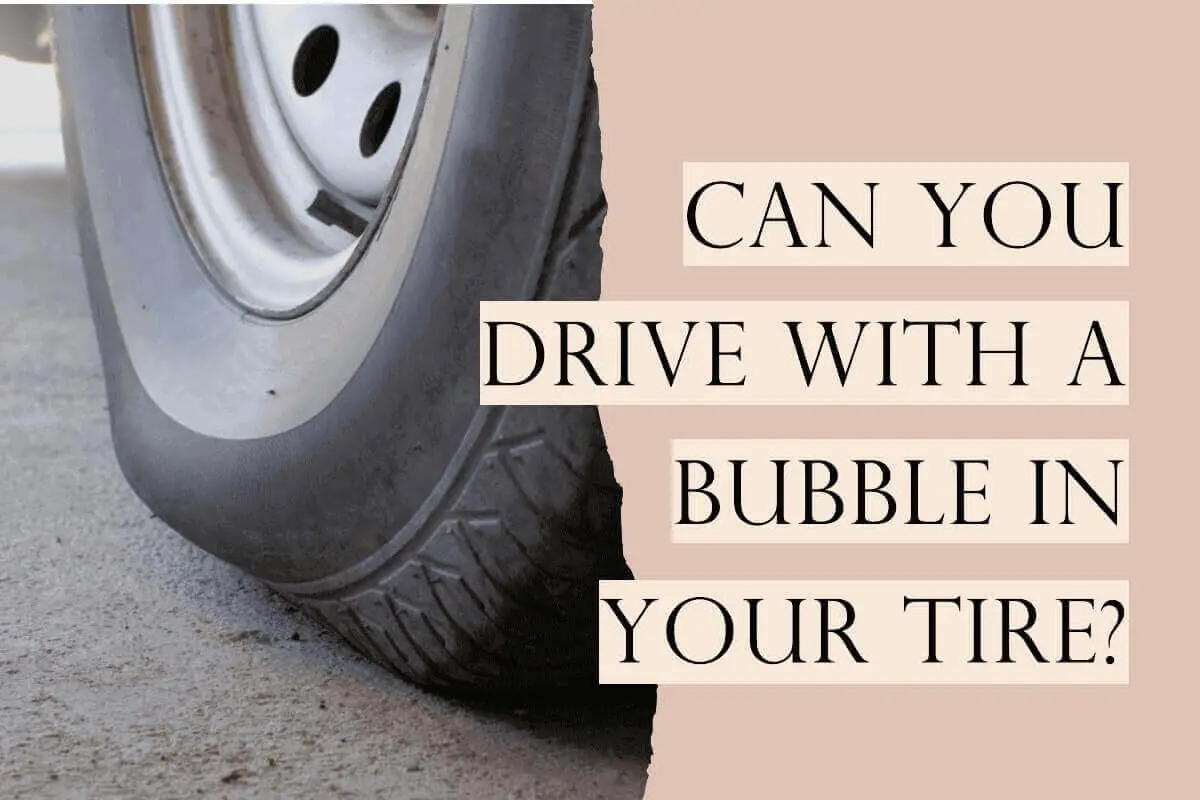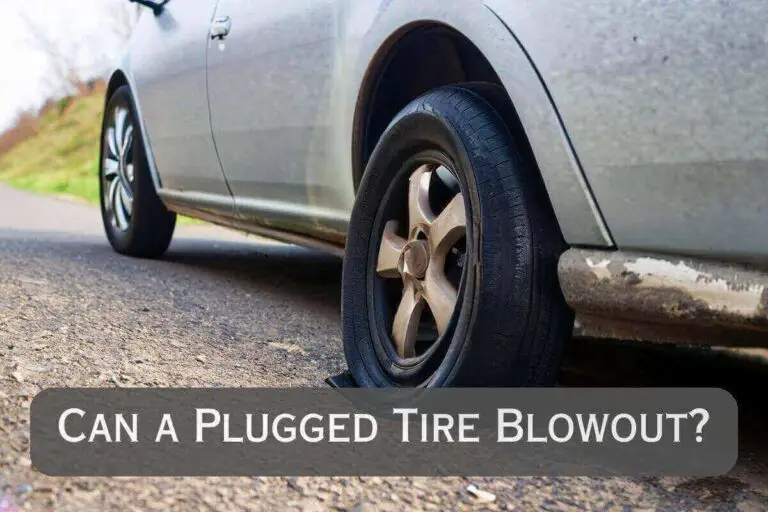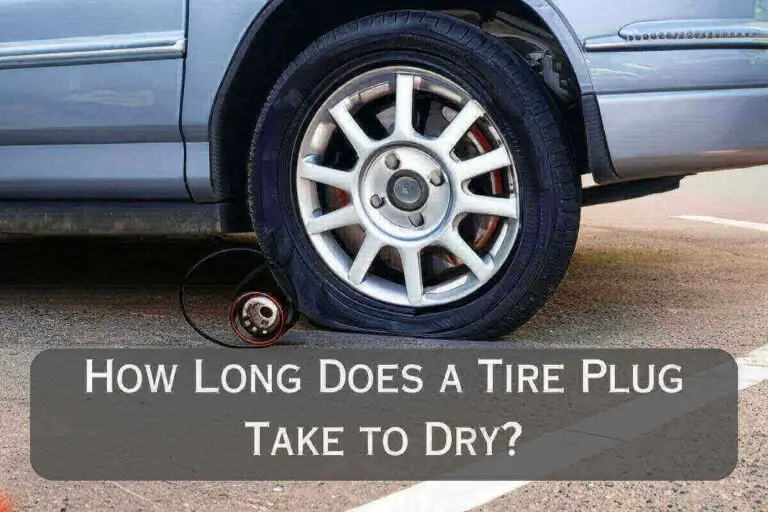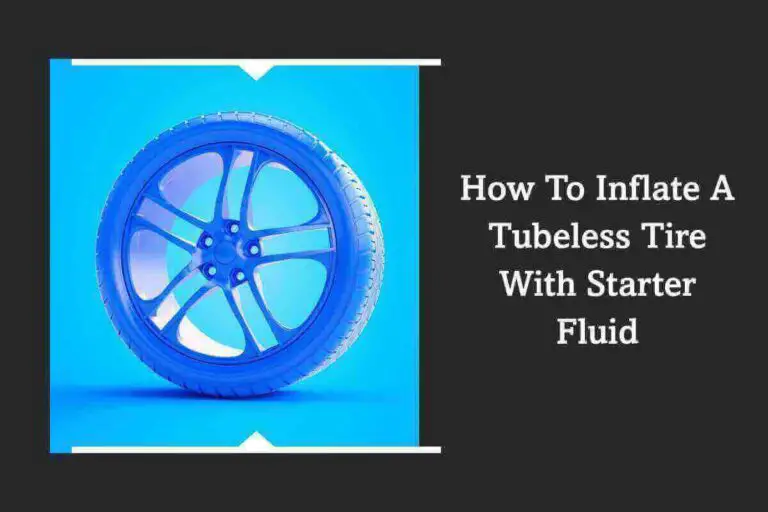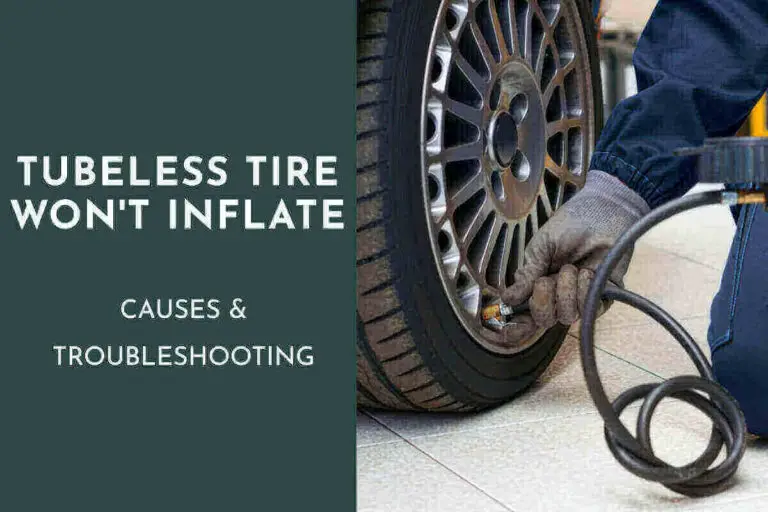Tires are integral to any vehicle, ensuring safety, performance, and a comfortable ride. However, accidents and road hazards can sometimes result in unexpected damage to your tires, such as a bubble forming on the sidewall.
This article addresses the question: Can I drive with a bubble in my tire? We will explore the risks associated with driving on a tire with a bubble, discuss the potential causes of tire bubbles, and provide guidance on how to handle this situation.
Understanding Tire Bubbles
Tire bubbles, also known as bulges or blisters, occur when the inner layers of the tire separate from the outer layers, creating a bulging area on the sidewall. These bubbles are typically caused by internal tire damage, such as impact from hitting a pothole, curb, or other road hazards. Over time, the separated layers can weaken the tire’s structure, posing potential risks to your safety on the road.
Can I Drive with a Bubble in My Tire
Discovering a bubble on your tire can be quite alarming. You may wonder if driving with such an anomaly is safe or if you must replace the tire immediately. Can I drive with a bubble in my tire is more complex than one might think.
A bubble on a tire is typically caused by damage to the inner layers of the tire, allowing air to penetrate the outermost layer and form a bulge. While it may seem tempting to continue driving with a bubble, it is generally advised against doing so.
It is because bubbles indicate weakened structural integrity and pose serious safety risks. Driving on a tire with a bubble increases the chances of sudden failure, leading to blowouts or loss of control while on the road.
The Risks of Driving with a Bubble in Your Tire
Driving with a bubble in your tire can be dangerous for several reasons:
- The weakened structure of the tire may compromise its ability to support the vehicle’s weight, leading to a higher risk of tire failure.
- The bubble can continue to grow and worsen, increasing the chances of a sudden blowout while driving.
- The bulging area puts excessive stress on the tire, making it more susceptible to further damage, including a complete rupture.
Signs of a Tire Bubble
Identifying a tire bubble is crucial to ensure your safety on the road. Look out for the following signs that may indicate the presence of a bubble in your tire:
- A visible bulge or blister on the sidewall
- Uneven or abnormal tire wear
- Vibrations or shaking while driving
- Loss of tire pressure or frequent need for inflation
- Hissing or hissing sounds coming from the tire
If you notice any of these signs, it is important to inspect your tire and take appropriate action.
What to Do if You Discover a Bubble in Your Tire
If you find a bubble on your tire, it is recommended to address the issue promptly to avoid potential hazards. Follow these steps:
Evaluate the severity
Assess the bubble’s size, location, and condition. A smaller, isolated bubble may pose a less immediate risk, while a more significant or multiple bubble may indicate a more critical situation.
Consult a professional
It is advisable to have your tire inspected by a qualified tire specialist or mechanic. They can provide an expert opinion on whether the tire can be safely repaired or if replacement is necessary.
Tire repair or replacement
Depending on the severity of the bubble and the tire specialist’s recommendation, you may have the option to repair the tire or replace it entirely. Tire repair is not always possible or recommended, significantly if the bubble compromises the tire’s structural integrity.
The options above should be discussed with the tire specialist to determine the best action. These options are beneficial when you try to find the answer to Can I drive with a bubble in my tire?
Preventing Tire Bubbles
Prevention is always better than cure when it comes to tire bubbles. While it’s impossible to eliminate the risk completely, following these preventative measures can help minimize the chances of encountering a tire bubble:
Practice cautious driving
Be vigilant while driving and avoid hitting potholes, curbs, or other road hazards. Slow down when driving over rough terrain to reduce the impact on your tires.
Maintain proper tire inflation
Overinflated or underinflated tires can increase the likelihood of a bubble forming. Regularly check and maintain the recommended tire pressure per the manufacturer’s guidelines.
Inspect your tires regularly
Conduct visual inspections to identify any signs of damage or abnormalities, including bulges or bulges. If you notice any issues, address them promptly.
Conclusion
Driving with a bubble in your tire can pose significant risks to your safety and the reliability of your vehicle. It is crucial to take immediate action if you discover a tire bubble by having a professional inspect it and determine the appropriate course of action.
By practicing cautious driving, maintaining proper tire inflation, and conducting regular tire inspections, you can reduce the chances of encountering a tire bubble and ensure a safer driving experience. Remember, your safety should always be the top priority for your vehicle’s tires.
I hope this article has provided valuable information about whether Can I drive with a bubble in my tire and the steps you can take to prevent them. By being proactive and taking proper care of your tires, you can minimize the risks associated with tire bubbles and ensure a smooth and safe driving experience.
Frequently Asked Questions (FAQs)
Is it OK to drive on a bubble tire?
No, driving on a tire with a bubble is unsafe. Driving on a tire with a bubble can lead to further damage, sudden tire failure, loss of control over the vehicle, and potential accidents.
How can I identify a bubble in my tire?
To identify a bubble in your tire, you should visually inspect the sidewall of each tire. Look for any abnormal bulges or protrusions on the surface. Bubbles typically appear as raised areas or bulges on the sidewall, often resembling an egg or a bump. If you notice such an anomaly, having your tire inspected by a professional as soon as possible is crucial.
What causes bubbles to form in tires?
Bubbles in tires are commonly caused by impact damage or internal structural problems. Impact damage can occur when you hit a high-speed pothole, curb, or other road hazard. This impact can weaken the tire’s internal structure, leading to a bubble’s development over time. Additionally, manufacturing defects, such as uneven distribution of materials, can also contribute to the formation of bubbles.
Can a bubble in a tire be repaired?
In most cases, bubbles in tires cannot be repaired. Once a bubble forms, it indicates that the tire’s integrity has been compromised, and the risk of failure is significantly increased. Improving a bubble may only provide a temporary fix and does not guarantee the long-term safety of the tire. Replacing a tire with a bubble is generally recommended to ensure your safety on the road.
Can a bubble in a tire pop?
Yes, a bubble in a tire can pop. Bubbles form when there is a separation between the layers of the tire, and the weakened spot can eventually rupture, causing the bubble to pop.
How long can I go with a bubble in my tire?
It is strongly recommended not to drive with a bubble in your tire. When you notice a bubble, it is best to address the issue immediately and have the tire replaced or repaired. Driving with a bubble can be dangerous, and the tire may fail anytime.

